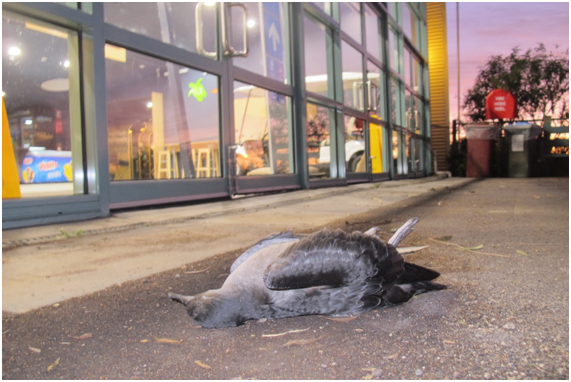Artificial lights at night cause high mortality of seabirds, one of the most endangered groups of birds globally. Fledglings of burrow-nesting seabirds, and to a lesser extent adults, are grounded by lights when they fly at night. The current state of knowledge of light attraction is reviewed, information gaps identified, and measures to address the problem are proposed. The most affected seabirds are petrels and shearwaters: at least 56 species, more than one-third of them (24) threatened, are grounded by lights. Grounded seabirds have been found worldwide, mainly on oceanic islands but also at some continental locations. In Spain, the problem is especially severe in the Canary Islands, with thousands of birds affected in Tenerife and Gran Canaria. Petrel breeding grounds confined to formerly uninhabited islands are particularly at risk from ever-growing levels of light pollution due to tourism and urban sprawl. Where it is impractical to ban external lights, rescue programs of grounded birds offer the most immediate and extended mitigation measures to reduce light-induced mortality, saving thousands of birds every year. informacion[at]ebd.csic.es: Rodríguez et al (2017) A global review of seabird mortality caused by land-based artificial lights. Conserv Biol doi:10.1111/cobi.12900


 Las altas temperaturas están provocando que las lagunas y las marismas de Doñana pierdan agua rápidamente
Las altas temperaturas están provocando que las lagunas y las marismas de Doñana pierdan agua rápidamente




